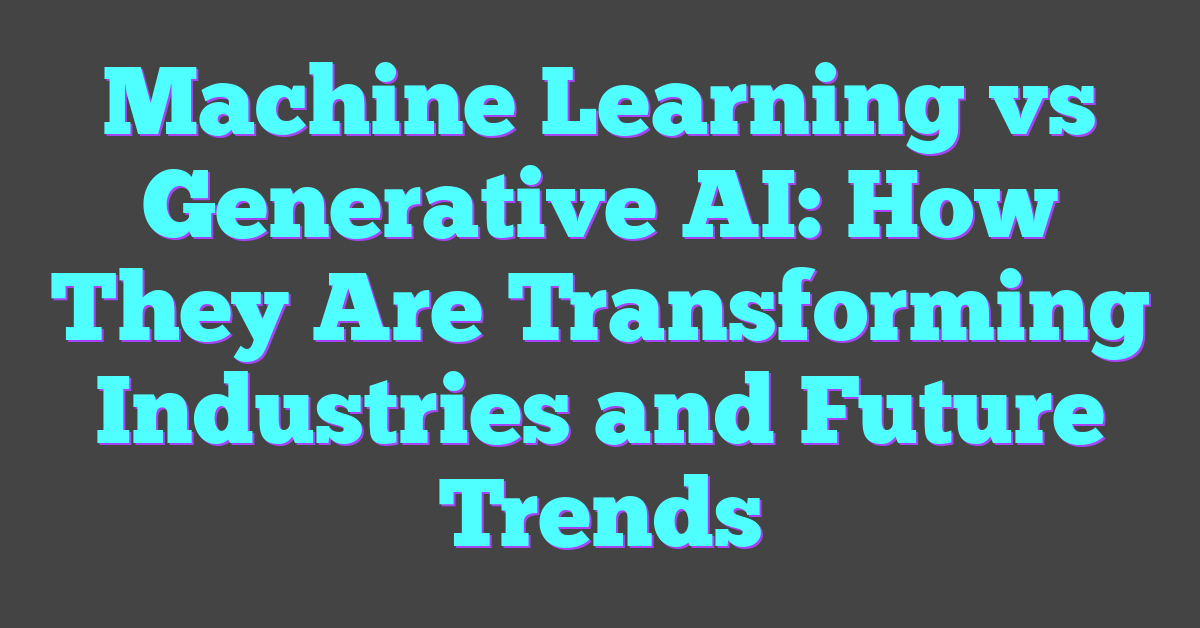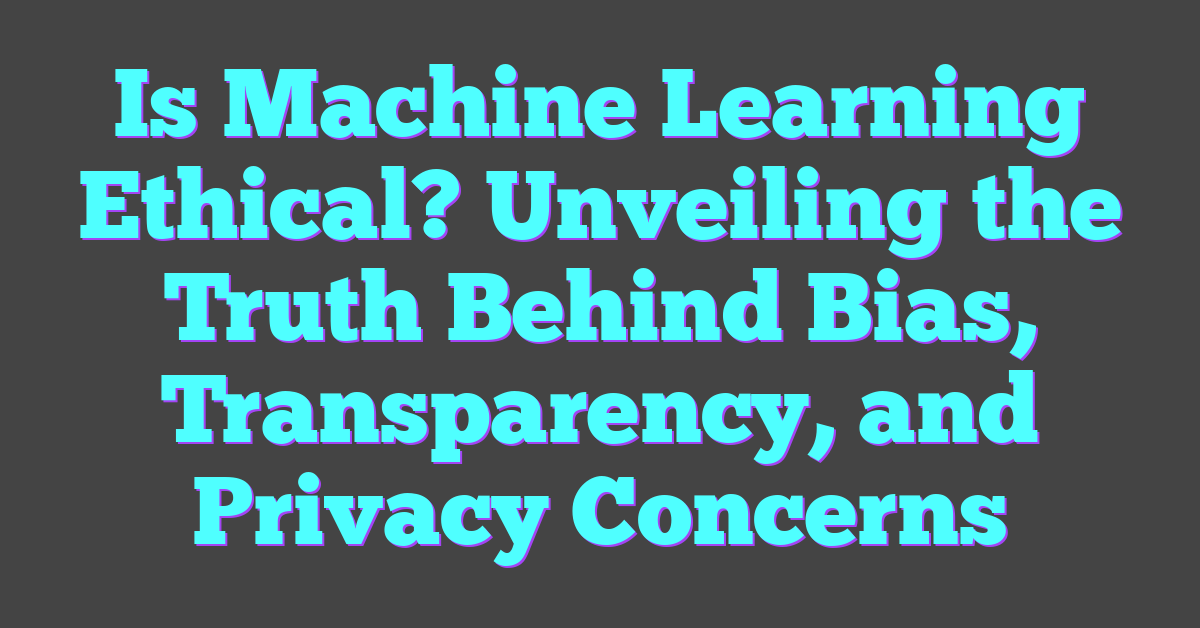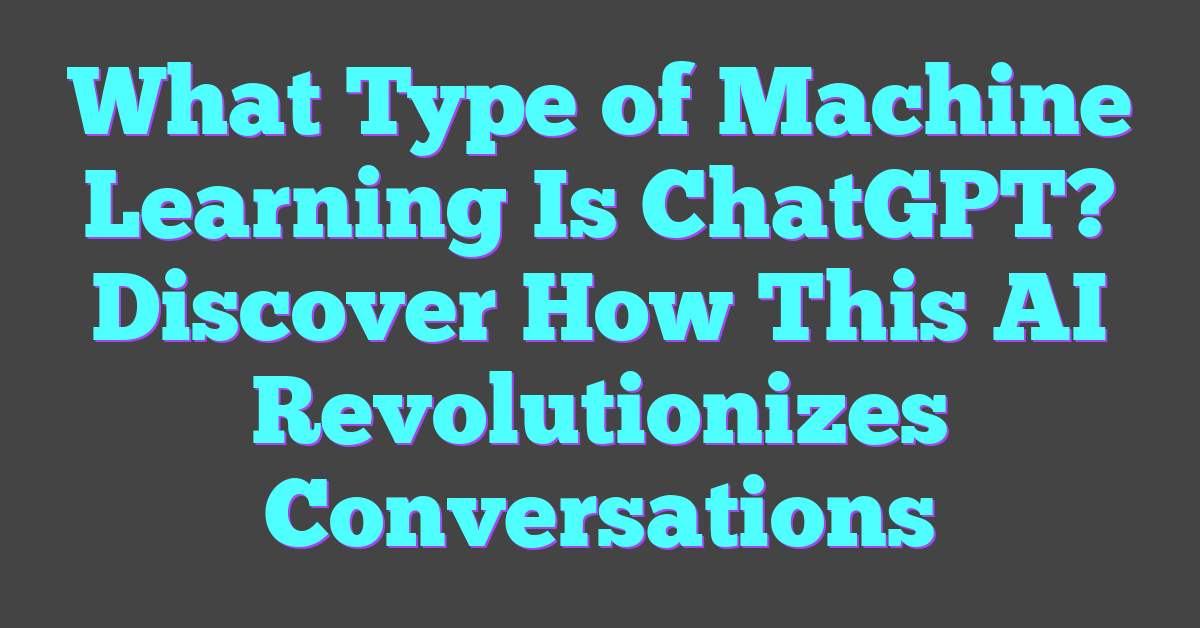In the ever-evolving world of technology, machine learning and generative AI have become buzzwords that spark both curiosity and excitement. While they share some common ground, these two fields offer distinct capabilities that are reshaping industries and everyday life. Understanding the differences between them can help demystify their roles and potential impacts.
Machine learning, a subset of artificial intelligence, focuses on enabling systems to learn from data and improve over time without explicit programming. On the other hand, generative AI takes things a step further by creating new content, from text and images to music and beyond. By grasping the unique strengths of each, individuals and businesses can better harness their power to drive innovation and solve complex problems.
Understanding Machine Learning
Machine learning (ML) is pivotal in today’s technological landscape. It enables systems to learn from data without explicit programming, driving significant innovation.

The Basics of Machine Learning
Machine learning involves algorithms that improve automatically through experience. It comprises several types, including:
- Supervised Learning: Models are trained on labeled data, which consist of input-output pairs. Examples include image classification and sentiment analysis.
- Unsupervised Learning: Models identify patterns in unlabeled data. Examples include clustering and anomaly detection.
- Reinforcement Learning: Models learn optimal actions through trial and error. Examples include game AI and robotic control.
Key Applications of Machine Learning
Machine learning applications span numerous industries:
- Healthcare: Predictive models assist in disease diagnosis, personalized treatment, and drug discovery.
- Finance: Algorithms detect fraudulent activities, optimize trading strategies, and provide customer service via chatbots.
- Retail: Recommendation systems enhance customer experiences by suggesting products based on previous purchases and browsing behaviors.
- Transportation: Autonomous vehicles and predictive maintenance for fleets improve safety and efficiency.
- Marketing: Tools analyze consumer data to optimize advertising campaigns and segment audiences effectively.
Each application showcases ML’s versatility and transformative potential in addressing complex problems.
Exploring Generative AI
Generative AI focuses on creating new content by emulating patterns from existing data. It leverages neural networks to generate text, images, music, and other media.
Defining Generative AI
Generative AI employs models like Generative Adversarial Networks (GANs) and Variational Autoencoders (VAEs) to generate new data. GANs consist of two networks— a generator and a discriminator— working together to produce realistic data. VAEs create latent data representations for generating new content, enhancing creative outputs.
Generative AI, unlike traditional AI, doesn’t merely analyze; it creates. Its capacity to mimic data patterns allows it to produce lifelike outputs without explicit programming. These models continually adapt, creating output that evolves with input data.
Uses and Examples in Various Industries
Generative AI has numerous applications across industries:
- Healthcare: Generative AI aids in drug discovery by simulating molecular structures. For example, it generates potential compounds that streamline research.
- Entertainment: In gaming, generative AI creates realistic characters and settings. AI-generated scripts and music enhance production efficiency.
- Marketing: Marketers use generative models to create personalized content. AI can generate targeted ad copy and social media posts, optimizing engagement.
- Fashion: Designers utilize generative AI to craft new clothing designs. This accelerates the design process and introduces innovative styles.
- Architecture: Architects employ generative AI to design building layouts. AI offers creative solutions and optimizes spatial arrangements.
These diverse applications demonstrate generative AI’s transformative potential in modern industries, enhancing productivity and creativity.
Comparing Machine Learning and Generative AI
Machine learning and generative AI each offer distinct capabilities and applications in the world of artificial intelligence. Both drive innovation but in different ways.
Differences in Technology and Application
Machine learning involves training models using labeled or unlabeled data to make predictions or decisions without explicit programming. The primary categories include supervised learning, unsupervised learning, and reinforcement learning. Examples include recommendation systems, fraud detection, and predictive maintenance.
Generative AI focuses on creating new content by analyzing patterns in existing data. Techniques involve models like GANs and VAEs. Common applications include image and music generation, text synthesis, and creating virtual environments.
Pros and Cons of Each Approach
Machine learning excels at solving complex, data-driven problems and optimizing performance over time. It requires large datasets and can be resource-intensive. However, it often struggles with generating new, creative content.
Generative AI stands out in its ability to produce lifelike and innovative content. It can adapt quickly to new data but also demands significant computation power. While it enhances creativity, it might produce unpredictable outcomes and pose ethical challenges.
Both approaches have unique strengths and limitations, making them suitable for different objectives and fields.
Impact on Industries
Both machine learning and generative AI are revolutionizing various sectors by streamlining processes and enabling novel applications. Their distinct yet complementary roles drive innovation and growth across industries.
Transformations in Healthcare
Machine learning and generative AI significantly impact healthcare, enhancing diagnostics and treatment plans. Machine learning algorithms analyze vast datasets to predict patient outcomes and identify potential health risks. Tools like IBM Watson assist doctors by providing data-driven insights, improving patient care.
Generative AI, on the other hand, contributes by designing new drugs and personalized treatment plans. Models such as GANs generate synthetic patient data for training purposes, preserving patient privacy. This technology accelerates research and development, potentially saving lives and reducing healthcare costs.
Innovations in Automotive Sector
In the automotive industry, machine learning optimizes vehicle safety and performance. Algorithms predict maintenance needs and improve fuel efficiency through data analysis. Autonomous driving technologies like those developed by Tesla rely heavily on machine learning for object detection and decision-making processes.
Generative AI enhances the automotive sector by designing innovative vehicle components and creating realistic simulations for testing. These models enable manufacturers to experiment with new designs and features without extensive physical prototypes, expediting the development process and reducing costs.
Future Trends and Predictions
Technological advancements in machine learning and Generative AI continue to shape industries. Exploring their future trends offers insight into where these fields are heading.
What’s Next for Machine Learning?
Machine learning will likely see more integration in everyday applications. Automation will play a key role, enhancing the efficiency of mundane tasks in various sectors, such as finance and customer service. Edge computing will become crucial, allowing real-time data processing on devices instead of relying on centralized systems. This approach will enable faster decision-making and reduce latency.
AutoML, the automation of machine learning model creation, will become more prevalent. This advancement means more people can build models without needing extensive technical knowledge. It’ll democratize machine learning and open up new opportunities for innovation.
Explainable AI (XAI) will gain traction as transparency becomes essential. Users and regulators will demand to understand how machine learning models make decisions. XAI will drive trust and compliance, especially in sensitive areas like healthcare and finance.
The Evolution of Generative AI
Generative AI will push boundaries in content creation and design. AI-generated art, music, and literature will become mainstream, enabling creators to explore new frontiers and produce innovative works efficiently. Companies will adopt AI tools to generate marketing content, reducing costs and speeding up campaigns.
Generative Adversarial Networks (GANs) will evolve, producing even more realistic synthetic data and images. This progress will benefit industries relying on high-quality visuals, such as gaming, filmmaking, and virtual reality. GANs will also enhance training data for machine learning models, improving their accuracy and robustness.
AI-driven drug design will accelerate, leveraging Generative AI to create new compounds and optimize existing ones more efficiently. This trend will shorten development cycles and lower costs in the pharmaceutical industry, potentially leading to faster treatments for diseases.
These advancements in machine learning and Generative AI will continue driving transformation across industries, offering new opportunities and fostering growth.
Conclusion
Both machine learning and Generative AI are paving the way for remarkable advancements across diverse industries. As they evolve, these technologies promise to bring even more innovative solutions to everyday challenges. Machine learning will become increasingly accessible and integrated into daily applications, while Generative AI will push the boundaries of creativity and efficiency. The future looks bright, with endless possibilities for growth and transformation driven by these powerful tools. Embracing these advancements will undoubtedly lead to a smarter, more efficient world.
Frequently Asked Questions
How is machine learning impacting the healthcare industry?
Machine learning significantly enhances healthcare by improving diagnostics and increasing patient safety. It helps analyze large datasets rapidly, leading to more accurate and timely diagnoses.
What role does Generative AI play in healthcare?
Generative AI accelerates drug design and discovery by simulating molecular structures and predicting their interactions, thereby speeding up the development of new medications and treatments.
How is the automotive industry benefiting from machine learning?
Machine learning improves vehicle safety and performance through advanced driver-assistance systems (ADAS) and predictive maintenance, ensuring safer and more efficient transportation.
What are the future trends in machine learning?
Machine learning is expected to become more integrated into everyday applications with advancements like Automated Machine Learning (AutoML) and Explainable AI, making the technology more accessible and understandable.
How will Generative AI evolve in content creation?
Generative AI will continue to advance in creating high-quality content, using Generative Adversarial Networks (GANs) to produce realistic images, videos, and other media, pushing the boundaries of creativity.
What opportunities does Generative AI offer in drug design?
Generative AI offers vast opportunities in drug design by enabling rapid simulations of molecular structures and predicting their behavior, significantly shortening the drug development timeline and increasing efficiency.
In what ways can these technologies foster innovation in various sectors?
Machine learning and Generative AI drive innovation by automating tasks, improving accuracy, and speeding up development processes. This leads to more efficient workflows and opens new doors for creative solutions across multiple industries.




